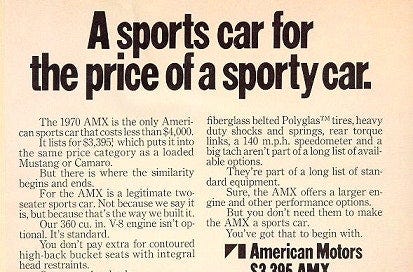Ahhh, the power of expectations
Price perception. How you frame the price of a product can deeply affect its perceived value.
You've (probably) done it. I've done it. When choosing a wine at a restaurant, plenty of people choose their wine the same way.
Your instinct says, "Just order the cheapest one."
But that might make you feel and look like a cheapskate bastard. So you choose the second-cheapest choice on the wine list.
Even so, some people just order the cheapest wine anyway.
This is one of my favorite stories of 2020.
A young couple ordered a $18 bottle of Pinot Noir at Balthazar, a popular Soho brasserie in New York. It was the cheapest wine on the wine list.
At the exaaaaaact same time, four Wall Street businessmen order the most expensive red wine on the list. A $2000 bottle of 1989 Chateau Mouton Rothschild Bordeaux.
Two waiters poured the two wines into identical decanters at the waiter's station.
But when the first waiter returned to the waiter's station, a mix-up happened.
Long story short, the couple accidentally got served the $2000 bottle of Bordeaux.
And the four Wall Street businessmen got served the cheap Pinot Noir.
Now here's where things get batshit hilarious.
The couple" jokingly pretended to be drinking an expensive wine while poking fun of themselves for ordering the cheap stuff".
And when the Wall Streeters tasted the $18 Pinot Noir they praised it for its "purity".
Whoopsie Daisy! No one even noticed they were served the wrong wine.
In theory, the price of something should be the result of the value people give to that thing.
In the real world, things work differently.
How you frame the price of a product can dramatically affect its perceived value. This means the price you ask for something makes people value it more.
Takeaways for your business:
1. As Rory Sutherland says, “Price is not perceived rationally, it’s perception driven.”
That's why in most Western countries paying $100 in a French restaurant is perfectly acceptable. But if you run a fancy Chinese restaurant and try charging $100 for a 10-course dinner, guess what happens? Most customers will ask, "Why is this so expensive?" The perception is that Chinese food is supposed to be cheap. Even though Chinese food is just as sophisticated, complex and delicious as French food.
2. How you frame your product’s price & features affects the way consumers perceive its value.
Research (Lee & Zhao, 2014) shows that consumers tend to believe that more features means greater value. At least over the long-term. But if you frame your product as a no-hassle convenient option for the short-run, they'll choose the simpler product.
Here's an example. If you're selling a digital camera, most consumers will pick the simpler, easy-to-use version. As long as you communicate your camera's ease of use (instead of its features).
3. “Same price, more features.”
If your product has more features than your competitors but is available in the same price range, use the "Same price" angle as an anchor and contrast your superior features.
Here’s a copywriting formula you could use:
Formula: A {Product category} for the price of a {Alternative way to frame your product}.
Real-world example: A sports car for the price of a sporty car.
(In this case American Motors uses the more features, same price angle).
1970 AMC AMX print ad:
4. "Same features, lower price.”
If the thing you're selling has the same features as your competitors, then use the "Same features, lower price" angle as the anchor.
Here’s a copywriting formula you could use:
Formula: Only {Your Brand Name} could introduce a {Product category + key differentiator} and call it a bargain.
Real-world example: Only Pioneer could introduce a Quartz Phase locked loop turntable and call it a bargain.
1977 Pioneer PL570 Turntable Ad:
5. “Higher features, higher price, but designed better”.
This is Apple's way of framing products. If your product user interface and user experience is superior compared to your competitors…and if your prices are also higher, use the "designed better" angle.
Because consumers are happy to pay more for products that are beautifully designed and easy to use. But they won't care about your superior features if your product is difficult to use.
Here’s a copywriting formula you could use:
Formula: It can {key differentiator that makes your product special} like {comparative}, {second differentiator or unexpected thing that makes your product special} like {comparative} and {third differentiator or unexpected thing that makes your product special} like {comparative}.
Real-world example: It can sing like Caruso, talk like Barrymore and calculate like Einstein.
1986 Apple IIgs Introduction Ad:
Happy New Year, stay safe and I’ll see you in 2021.
Miguel Ferreira
Founder & Chief Copywriter, Teardwn + Nishi + Copy Ipsum + Sneakers Bingo
(Because good copy is unignorable copy that helps you sell more this year than last. *cof cof....and gives you a real business advantage.* Work with me).
You’re on the free list for Creative Samba. For the full experience, become a paying subscriber. My paid newsletter is packed with actionable insights about copywriting, marketing and how the human mind works. So you can learn how to think & write more creatively — like Pro copywriters do.







